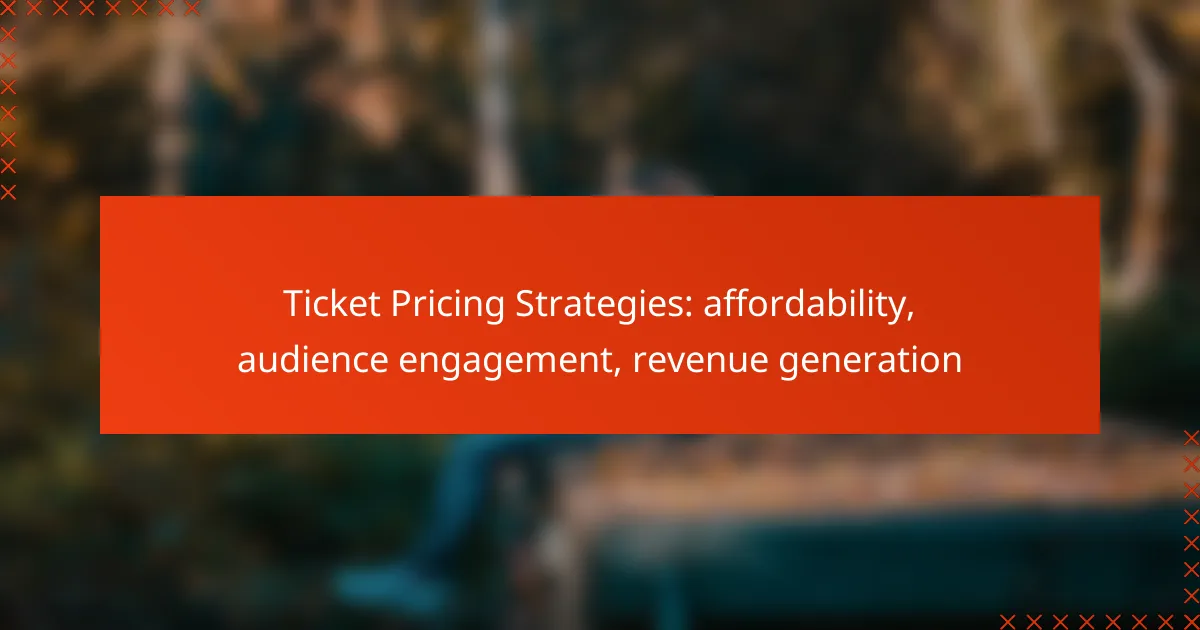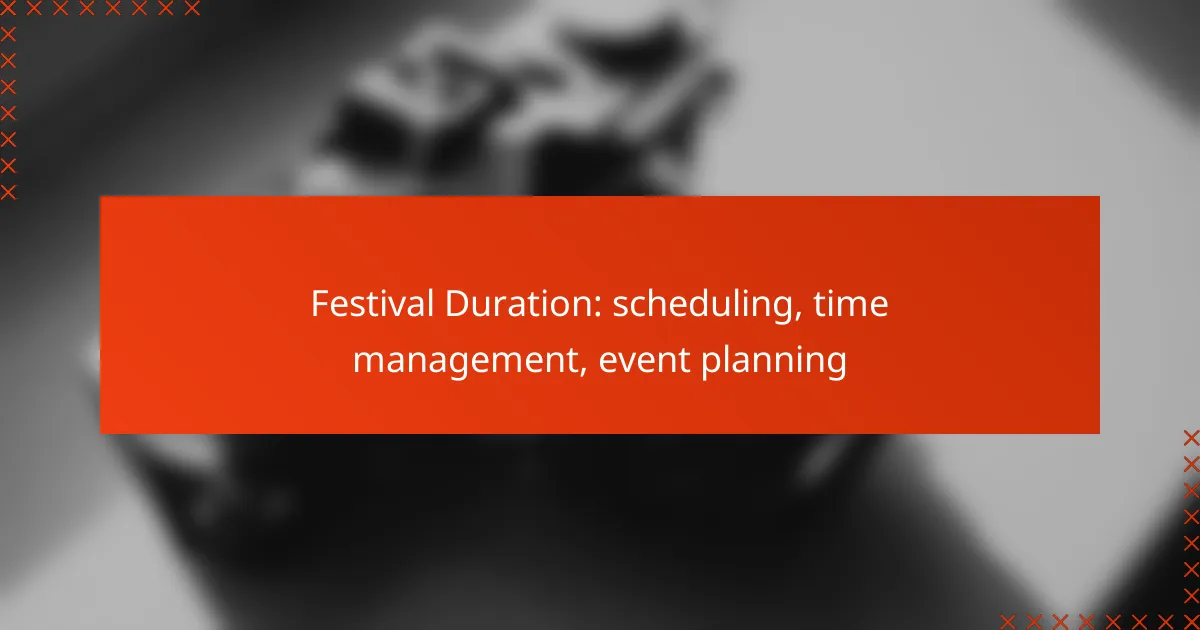To ensure a successful event, it is essential to have the right AV equipment, including microphones, projectors, and lighting systems, which facilitate clear communication and engagement. Incorporating streaming services allows for real-time content access and interactive participation, broadening audience reach. Comprehensive technical support is crucial, providing on-site technicians and troubleshooting to guarantee smooth operations throughout the event.

What AV equipment is essential for events in Australia?
Essential AV equipment for events in Australia includes microphones, projectors, speakers, mixing consoles, and lighting systems. Each component plays a crucial role in ensuring clear communication and an engaging experience for attendees.
Microphones
Microphones are vital for capturing audio during events, whether for speeches, presentations, or performances. Consider using wireless microphones for mobility or handheld options for ease of use. Ensure you have a mix of lapel, handheld, and condenser microphones to suit different speakers and settings.
When selecting microphones, check for compatibility with your audio system and consider the venue’s acoustics. Testing the microphones before the event can help avoid technical issues.
Projectors
Projectors are essential for displaying visuals, such as presentations or videos, to a large audience. Choose projectors with sufficient brightness (measured in lumens) to ensure visibility in various lighting conditions. Generally, projectors with at least 3000 lumens are suitable for medium to large venues.
Consider the resolution as well; higher resolutions like Full HD (1080p) provide clearer images. Ensure you have the necessary cables and adapters for connecting to laptops or other devices.
Speakers
Speakers distribute sound throughout the event space, making them critical for audience engagement. Opt for powered speakers for ease of setup and to avoid the need for external amplifiers. The size and number of speakers depend on the venue size and expected audience.
For larger events, consider using a combination of main speakers and monitors for presenters. Always test the sound levels before the event to ensure clarity and avoid distortion.
Mixing consoles
Mixing consoles allow for the control of audio levels from various sources, ensuring a balanced sound experience. A digital mixing console can offer more flexibility and features compared to an analog one, such as effects and presets. Choose a console that matches the complexity of your audio needs.
Familiarize yourself with the console’s layout and functions before the event. Having a sound engineer on hand can help manage audio levels effectively during the event.
Lighting systems
Lighting systems enhance the atmosphere and visibility of the event. Consider using LED lights for energy efficiency and versatility. A combination of ambient, task, and accent lighting can create the desired mood and highlight key areas of the venue.
When planning lighting, consider the event’s theme and schedule. Ensure you have the necessary control systems to adjust lighting throughout the event, and conduct a walkthrough to test the setup before guests arrive.
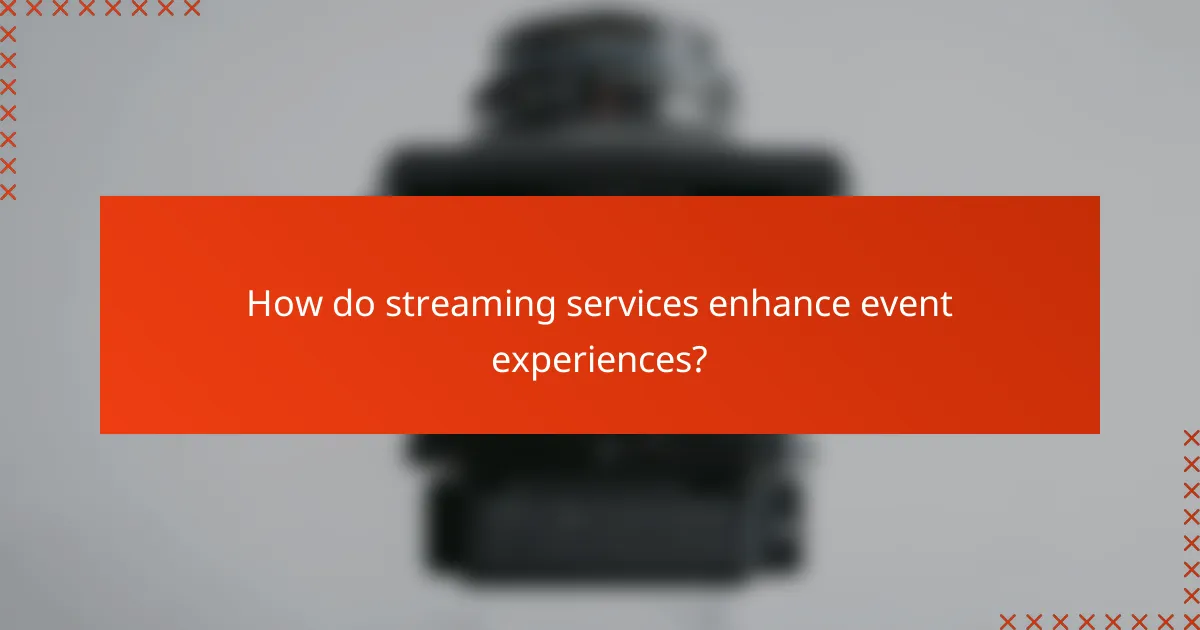
How do streaming services enhance event experiences?
Streaming services significantly enhance event experiences by providing real-time access to content and engaging audiences regardless of their location. They allow for interactive participation, making events more dynamic and accessible to a broader audience.
Real-time audience engagement
Real-time audience engagement is a key feature of streaming services that allows viewers to interact during events. Features such as live chats, polls, and Q&A sessions enable participants to share their thoughts and ask questions as the event unfolds.
This immediate interaction fosters a sense of community and connection, making attendees feel more involved. For example, using platforms like Zoom or YouTube Live, hosts can respond to audience queries instantly, enhancing the overall experience.
Multi-platform accessibility
Multi-platform accessibility ensures that events can be viewed on various devices, including smartphones, tablets, and computers. This flexibility allows attendees to join from anywhere, whether they are at home or on the go.
Streaming services like Vimeo and Facebook Live support multiple platforms, increasing the potential audience size. It’s essential to ensure that the chosen service is compatible with the devices your target audience is likely to use.
High-definition video quality
High-definition video quality is crucial for delivering a professional and engaging viewing experience. Streaming services often support HD and even 4K resolution, providing clear visuals that enhance the event’s impact.
When selecting a streaming service, consider the internet bandwidth available to your audience. A stable connection is necessary to maintain high-quality streaming without interruptions, which can detract from the experience.
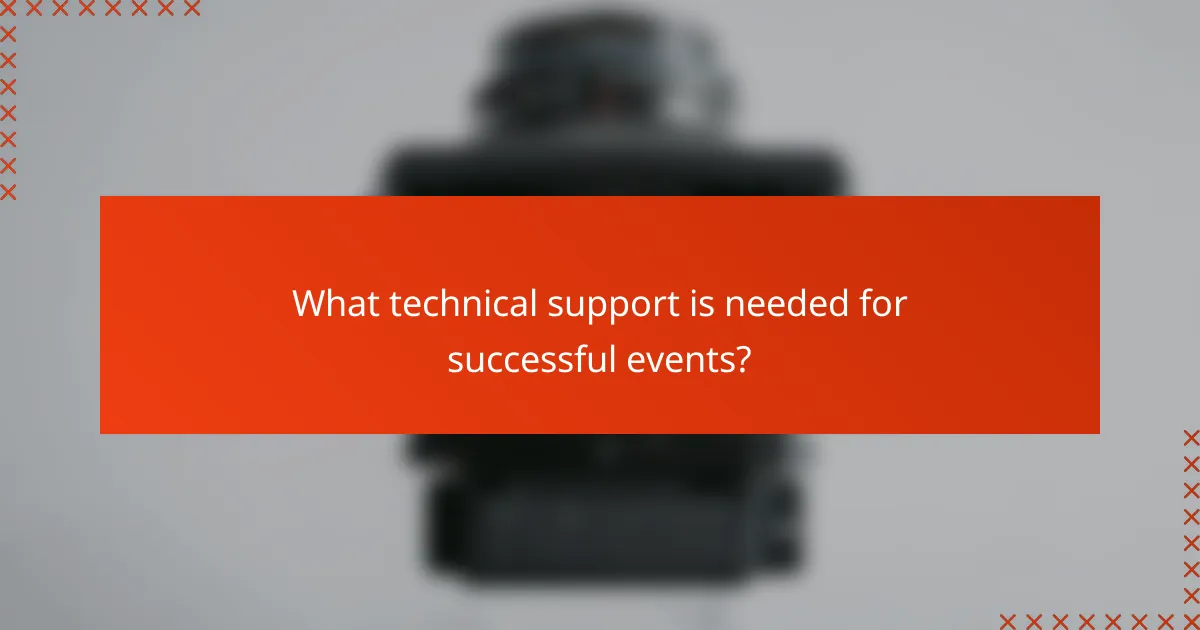
What technical support is needed for successful events?
Successful events require comprehensive technical support to ensure smooth operation and minimal disruptions. This includes on-site technicians, remote troubleshooting capabilities, and thorough equipment setup and testing.
On-site technicians
On-site technicians are essential for addressing immediate technical issues during events. They can quickly resolve problems with audio-visual equipment, streaming services, and connectivity, ensuring that everything runs smoothly.
When hiring on-site technicians, consider their experience with the specific technology being used. It’s beneficial to have technicians familiar with the venue’s layout and equipment to facilitate quicker problem resolution.
Remote troubleshooting
Remote troubleshooting provides an additional layer of support, allowing experts to assist from afar. This is particularly useful for resolving software issues or guiding on-site staff through complex setups without needing to be physically present.
To implement effective remote troubleshooting, ensure that reliable communication tools are in place, such as video conferencing software or dedicated support lines. This can significantly reduce downtime during events.
Equipment setup and testing
Thorough equipment setup and testing are critical steps before any event. This process involves checking all audio-visual components, ensuring proper connections, and verifying that streaming services are functioning as intended.
Allocate sufficient time for setup and testing, ideally several hours before the event starts. Create a checklist of all equipment and functionalities to verify, which can help prevent last-minute issues and ensure a seamless experience for attendees.
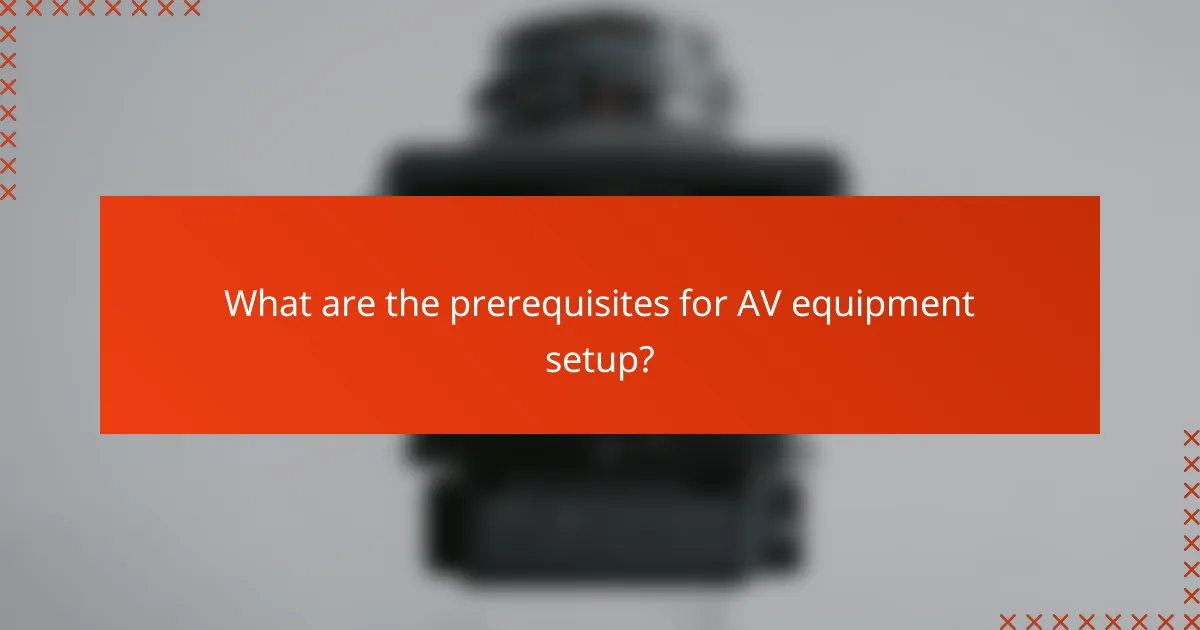
What are the prerequisites for AV equipment setup?
To successfully set up AV equipment, it is essential to ensure adequate power supply, reliable network connectivity, and sufficient space. These prerequisites are critical for optimal performance and seamless operation during events or presentations.
Venue power capacity
Assessing the venue’s power capacity is crucial for AV equipment setup. Ensure that the electrical system can support the total wattage of all devices, including projectors, speakers, and mixers. A typical AV setup may require anywhere from a few hundred to several thousand watts, depending on the complexity of the equipment.
It’s advisable to consult with an electrician or AV technician to evaluate the venue’s power outlets and circuit load. Overloading circuits can lead to outages or equipment damage, so consider using dedicated circuits for high-demand devices.
Network connectivity
Reliable network connectivity is vital for AV equipment that relies on streaming services or cloud-based applications. Ensure that the venue has a stable internet connection with sufficient bandwidth, ideally at least 10 Mbps for standard streaming and higher for HD or 4K content.
Test the network before the event to identify any potential issues. Using wired connections is preferable for critical devices to minimize latency and interruptions. If Wi-Fi is necessary, ensure the signal strength is strong throughout the venue.
Space requirements
Space requirements for AV equipment depend on the type and number of devices being used. Ensure there is adequate room for projectors, screens, and speakers, as well as for audience seating and movement. A general guideline is to allow at least 1.5 to 2 meters of space between the audience and the screen for optimal viewing.
Consider the layout of the venue when planning the setup. Ensure that there is enough space for cables and equipment without creating tripping hazards. Additionally, allow for ventilation around equipment to prevent overheating during operation.
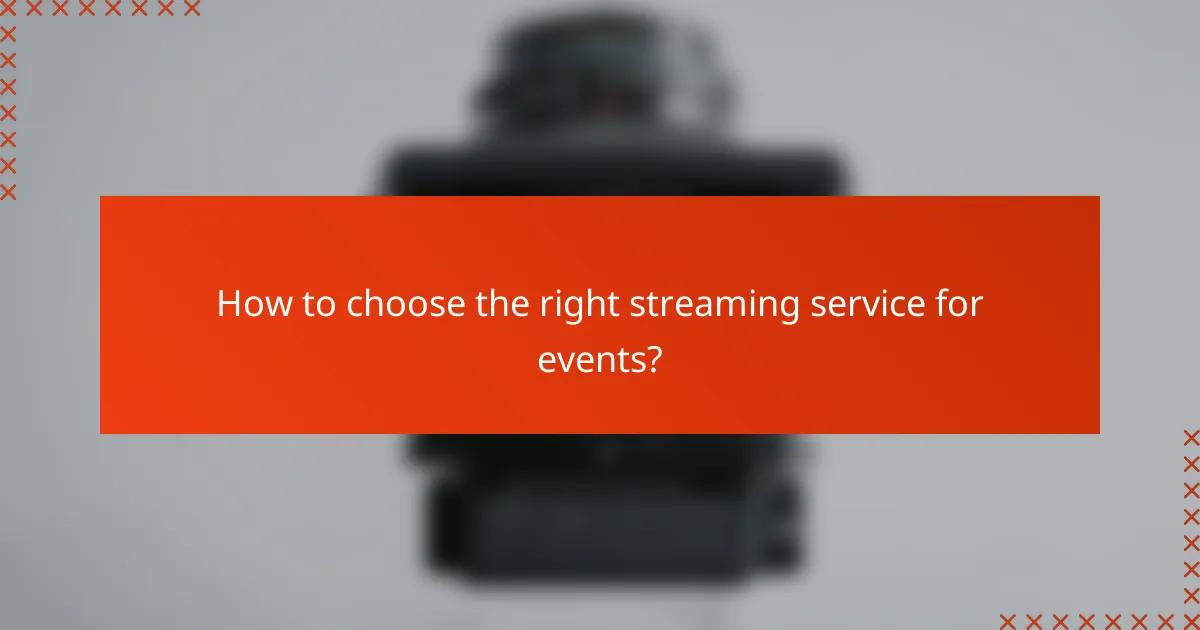
How to choose the right streaming service for events?
Selecting the right streaming service for events involves understanding your audience size, budget, and the specific features you need. By evaluating these factors, you can ensure a smooth streaming experience that meets your event’s requirements.
Audience size considerations
The size of your audience significantly influences your choice of streaming service. For small gatherings, basic platforms may suffice, while larger events might require services that can handle thousands of concurrent viewers without lag. Look for services that offer scalability to accommodate fluctuating audience sizes.
Consider services that provide analytics on viewer engagement and attendance. This data can help you assess whether the platform meets your audience’s needs and expectations.
Budget constraints
Your budget will dictate the streaming services you can consider. Basic plans may start at low monthly fees, while premium services with advanced features can range into the hundreds or thousands of dollars per event. It’s crucial to balance cost with the features you require.
Be aware of additional costs, such as bandwidth fees or equipment rentals, which can add up quickly. Always read the fine print to understand what is included in the pricing and what might incur extra charges.
Features comparison
Evaluate whether the service integrates with other tools you use, such as social media or email marketing platforms. A seamless integration can enhance your event’s reach and engagement.
Lastly, consider the level of technical support offered. Reliable customer service can be invaluable during live events, so choose a service that provides robust support options, including live chat or phone assistance.


